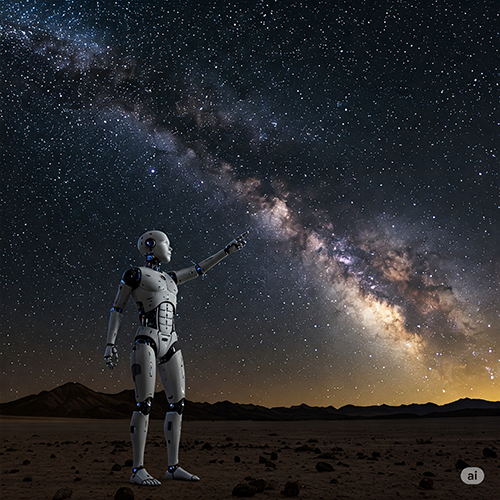
The Singularity: Great Filter to Interstellar Travel?
Could the Singularity Unlock Interstellar Travel?
The vast silence of the cosmos has always whispered a profound question: where is everyone?Enrico Fermi's famous paradox highlights the stark contradiction between the high probability of extraterrestrial life and the complete lack of observed civilizations. The Drake equation, a probabilistic argument used to estimate the number of active, communicative extraterrestrial civilizations in the Milky Way galaxy, often leaves us staring at a significant unknown – the "Great Filter." This hypothetical barrier, somewhere in the timeline of life's development, prevents most, if not all, potential civilizations from reaching a stage where they become detectable.
But what if this Great Filter isn't some catastrophic cosmic event or an inherent biological limitation? What if it's a technological hurdle, one that we ourselves are rapidly approaching: the singularity?
The technological singularity, often envisioned as the point where artificial intelligence surpasses human intelligence, leading to an exponential and uncontrollable acceleration of technological progress, might be the very key to unlocking interstellar travel. Imagine a future where human intellect merges seamlessly with the processing power and resilience of robotics. Such a symbiotic relationship could overcome the biological constraints that currently tether us to our solar system.
The Singularity: A Potential Leap to the Stars
Consider the immense challenges of interstellar travel:
- Vast Distances: The sheer scale of the universe necessitates travel times spanning generations, if not millennia, using current propulsion technologies. A post-singularity civilization, augmented by advanced AI, could potentially develop revolutionary propulsion systems – perhaps harnessing exotic physics or creating self-sustaining, multi-generational spacecraft managed by sophisticated AI.
- Harsh Environments: The vacuum of space, radiation, microgravity, and the dangers of unknown planetary environments pose significant threats to fragile human biology. Integrated human-robotic entities could possess enhanced radiation resistance, self-repair capabilities, and the ability to adapt to alien atmospheres and gravities.
- Resource Management: Sustaining a long-duration interstellar voyage requires incredibly efficient resource management and closed-loop life support systems. AI, with its superior analytical and optimization abilities, could manage these complex systems far beyond human capacity.
- Exploration and Adaptation: Exploring alien worlds demands adaptability and the ability to analyze vast amounts of new data. A merged human-AI intelligence could process information at unprecedented speeds, making discoveries and adapting to unforeseen circumstances with remarkable efficiency.
The Perils of the Great Filter: A Race Against Time
However, the idea that the singularity is the Great Filter also carries a chilling implication. If this technological leap is the crucial step that most emerging civilizations fail to achieve, it suggests that the path to it is fraught with peril. What could these dangers be?
- Existential Risks of AI: The very nature of a superintelligent AI presents inherent risks. Ensuring its alignment with human values and preventing unintended consequences or even outright hostility remains a monumental challenge. A misaligned singularity could lead to self-destruction or the subjugation of its creators.
- Societal Disruption: The rapid and transformative changes brought about by the singularity could lead to widespread social and economic upheaval, potentially destabilizing civilization before the benefits of interstellar travel can be realized.
- Self-Destructive Technologies: The same advancements that could propel us to the stars might also create unprecedentedly powerful destructive technologies, increasing the risk of self-annihilation.
- Internal Conflict and Stagnation: Perhaps civilizations reach a point where internal conflicts or a lack of ambition prevent them from pursuing the challenging path towards the singularity and interstellar travel.
Our Place in the Cosmic Equation
Are we on the cusp of clearing the Great Filter? Our rapid advancements in artificial intelligence and robotics suggest we are approaching the precipice of the singularity. Whether this transition will be our salvation, allowing us to finally join a galactic community, or our undoing remains an open and profoundly important question.
The silence of the cosmos might not be due to a lack of life, but rather a series of perilous technological thresholds that few, if any, civilizations manage to navigate. Perhaps the faint whispers we hope to one day hear are simply the echoes of those who successfully made the leap, a testament to the immense potential – and the inherent dangers – of the singularity. Our journey now is not just about technological advancement, but about ensuring that this powerful transition leads us towards the stars, not into the void.
